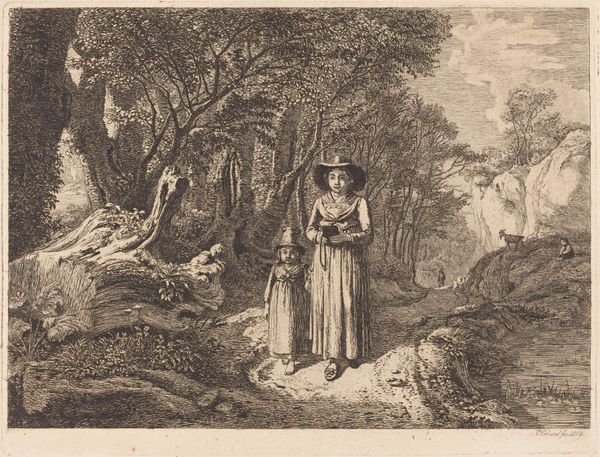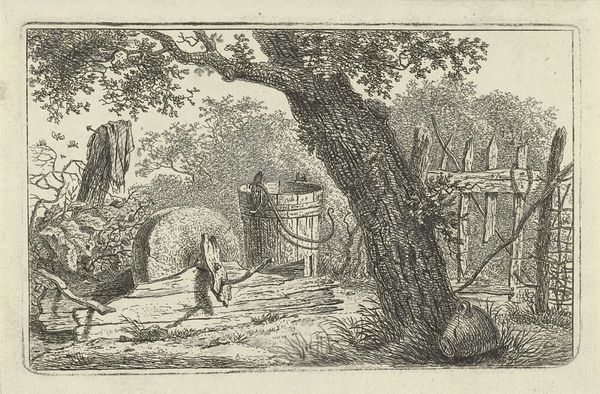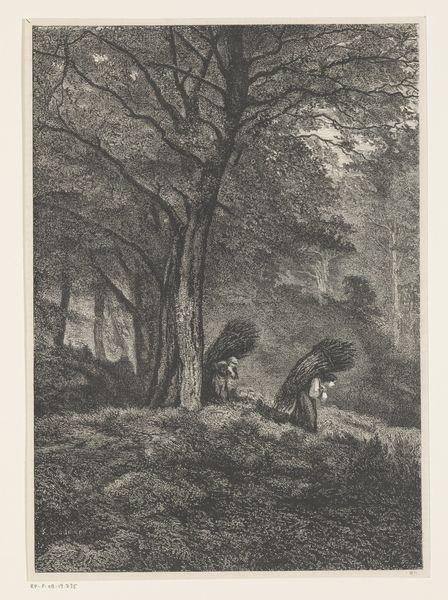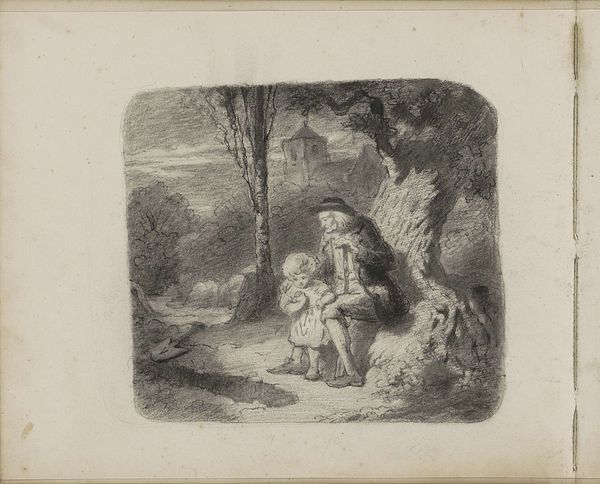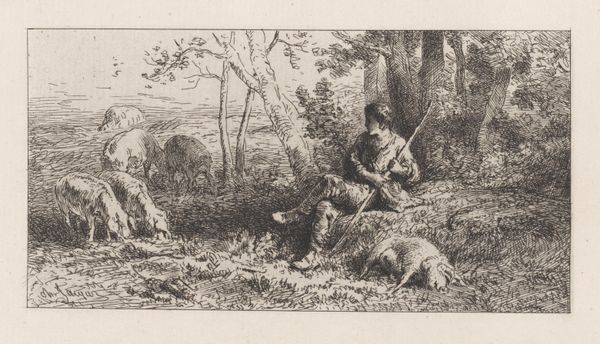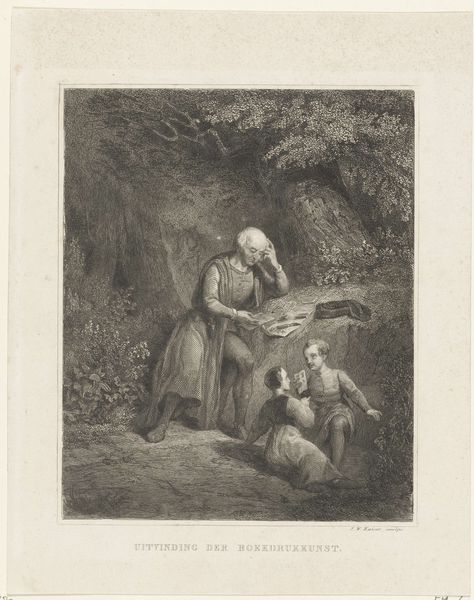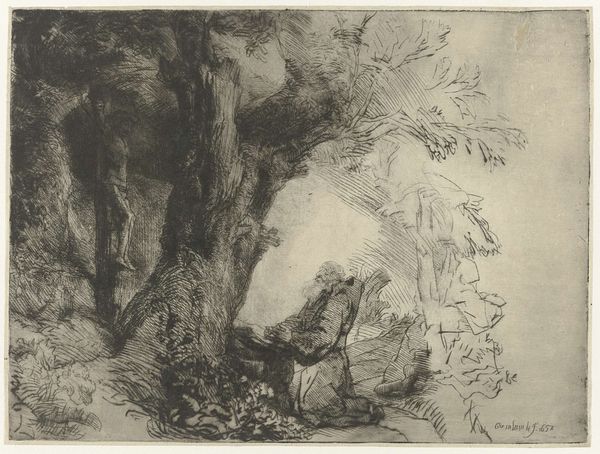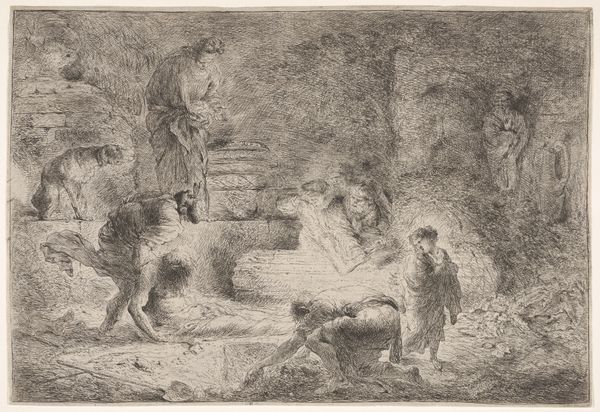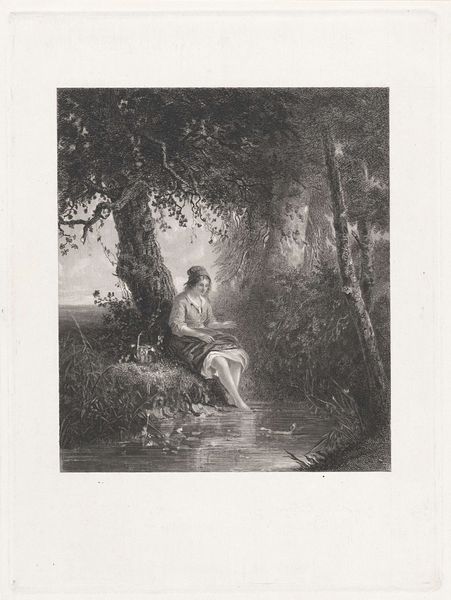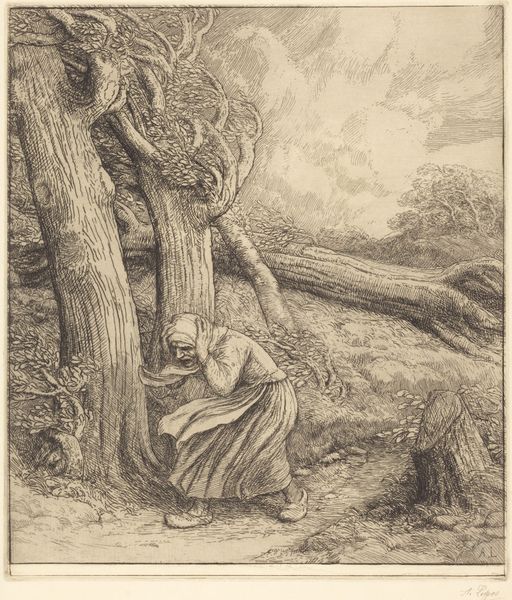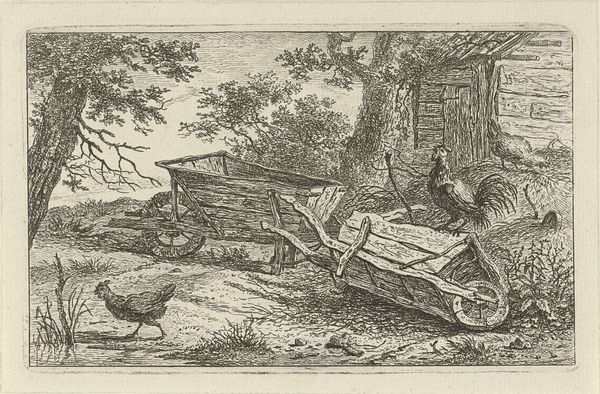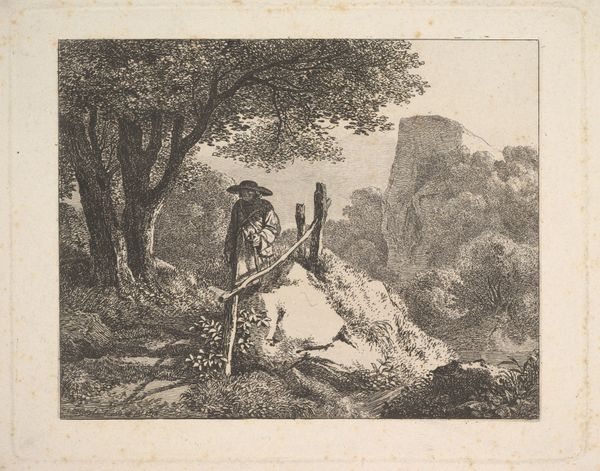
Dimensions: height 165 mm, width 210 mm
Copyright: Rijks Museum: Open Domain
Editor: Here we have "Girl Leaning on a Stick," a charcoal drawing by Richard Burnier, created sometime between 1835 and 1884. It gives off a solitary, almost melancholy air, doesn't it? What social or historical factors do you think influenced this work? Curator: Absolutely. What strikes me is the way Burnier situates this young woman within the landscape. How does her pose and position – leaning on a stick, almost blending with the tree – speak to the labor and roles of women in 19th-century rural Dutch society? Editor: That's a really good point, she looks quite still. Curator: Yes, this seemingly simple scene reflects a larger narrative. Is she resting after working? What does the presence of the dog tell us about ideas of companionship and work in this period? This romantic vision contrasts the reality that women were often unpaid workers whose contributions were unacknowledged, wouldn't you agree? Editor: Yes! I never thought of the dog's presence. How does Burnier challenge or perpetuate those norms? I wonder about his intent. Curator: The drawing reflects the idealized version, while hinting at the realities of working-class women through the somewhat weary posture of the subject. What could this idealized presentation say about how art and romanticism reinforced or resisted structures of power at the time? Editor: It’s eye-opening to consider the layers of meaning embedded in a seemingly simple genre scene. Thanks! Curator: Indeed, art acts as a historical mirror, reflecting both conscious and unconscious biases within society. This piece truly brings social structures and historical art into a conversation!
Comments
No comments
Be the first to comment and join the conversation on the ultimate creative platform.

